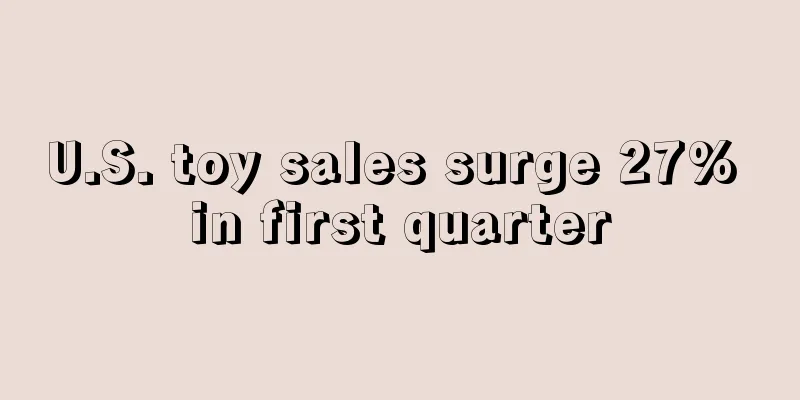Another price increase! Amazon delivery fees will enter the era of "3"

|
Amazon FBA delivery fees increased twice in March
On April 14, Amazon announced updates to its FBA delivery fees in the United States.
In the announcement, Amazon announced that starting from April 28, it will once again impose a 5% fuel and inflation surcharge on top of the current Amazon Logistics (FBA) per-item delivery fee. Amazon Chief Executive Andy Jassy said in an interview Thursday that the move was necessary as the company faces rising costs related to inflation, the pandemic and the war in Ukraine.
The announcement showed that since the outbreak of the epidemic, Amazon has made huge investments in its stores and delivery businesses, adding more than 750,000 full-time and part-time jobs, and the average hourly wage in the United States has climbed from US$15 to US$18. These investments have brought huge growth to sellers.
“We have absorbed some of these cost increases, but rising fuel prices and inflation charges present further challenges. It is unclear how long these inflation costs will last. In response, we will for the first time apply a fuel and inflation surcharge rather than a permanent fee change – a mechanism widely used among supply chain providers.”
From Amazon's announcement, we can know that not only are sellers' operating costs rising, but Amazon, as an e-commerce platform, is also experiencing rising operating costs during the epidemic. Coupled with the recent rise in oil prices and inflation in the United States, Amazon needs to earn back the costs it has spent from sellers.
Regarding the increase in FBA surcharges, Amazon said that the fuel and inflation surcharges are not permanent charges. However, Amazon did not disclose whether the rate of this fee will change in the future or when it will stop being levied.
In fact, this is the second price increase for Amazon FBA fees this year. In November last year, Amazon released an announcement that Amazon would adjust a number of fees starting January 18, 2022, which caused heated discussions among sellers at the time. Although Amazon’s announcement of adjusting FBA fees is nothing new, the price increase at the beginning of the year involved six fees, including removal and disposal of orders, logistics and distribution fees, monthly storage fees, sales commissions, logistics pre-processing and labeling service fees, and small and light commodity program fees. Among them, except for sales commissions, all other fees have increased in price. The removal and disposal fees of some products have increased by up to 150%.
FBA delivery fees are rising, can sellers follow suit?
Sellers are still complaining about the increase in delivery fees. Since last year, it has not been as easy to make money on Amazon as before!
The price has increased twice in three months. Sellers are really too passive ... The profit margin is already low, the price is involuted, and now the price is rising, it's too difficult ... The price increase of products cannot keep up with the increase of delivery fees , and Amazon has taken the bulk of the profits... Through calculation, the 5% price increase is actually distributed to the delivery fees of each product, and the increase range of most common products is between $0.16-$0.35. The impact on the profit of a single product is between 1%-1.5%, and the impact on the profit of the entire store or company depends on the number of orders, which is 1%-3% or even higher.
At the same time, since low-priced products themselves have low profits, the increase in delivery fees will directly reduce the profit margins of such products, especially products priced below US$15.
Many sellers want to make up for this cost increase by raising prices, but it is not so easy to transfer the cost to buyers. The best situation that sellers hope for is a collective price increase, but small sellers naturally have little appeal, so they can only hope that the top sellers will raise prices first, and then everyone will follow suit.
If only a few sellers raise their prices, the sellers who raise their prices will not only face a drop in orders, but may also trigger the platform's "pricing mechanism" and lose their shopping carts, or even have their products stopped selling. Therefore, some sellers hope that Amazon can shut down the "potential pricing error" system so that they can raise prices.
However, most of the sellers who said that the price would increase were just talking ... I asked a few sellers who said that the price would increase yesterday, and they still did not increase it. There are two reasons for this - too much inventory, and they are afraid that there will be no orders...
Some sellers also said that although the platform's various fees have been rising, the seller experience is getting worse and worse. In most cases, customer service cannot help sellers solve problems, the number of shipments and the number of receipts are rarely consistent, and black technology is still rampant on the platform.
But having said that, I believe that there will still be many sellers who will continue to sell on the Amazon platform. Although the platform is constantly boiling frogs in warm water, Amazon is still the most stable among cross-border e-commerce platforms.
Some sellers believe that after several price increases in FBA, it is indeed difficult to sell low-priced products. Because the profit margins of these products are not high, if you want to pursue profits, you will have to give up these products sooner or later.
However, Walmart has also accelerated the layout of its e-commerce platform in the past two years, first launching WFS, which is similar to FBA. Recently, it has provided new sellers with various benefits such as free warehousing, commission and delivery fee reductions. In addition, some domestic brands have already achieved considerable revenue and profits on the Walmart platform, such as Yayi Technology. The development of Walmart's e-commerce platform may bring more opportunities for domestic cross-border e-commerce sellers to choose platforms. It is becoming increasingly difficult for sellers on the European site
Compared with the US site, the taxes and various compliance policies of the European site are overwhelming for sellers. There are more and more compliance policies such as CE certification, VAT, brand, European label, EPR, electronic products, 3WE, battery law, British label, packaging law, etc., and the expenses are getting bigger and bigger. Coupled with the falling exchange rate and the rising delivery fees every year, sellers have been saying that it is too difficult to make a profit on the European site.
One seller said that he had been running the European site for many years, and the situation was getting worse year by year. Especially this year - March 2022, CPC soared, traffic became less and less, and the number of orders almost dropped by half, or even no orders. The key is that it is still a loss, with almost no profit.
Some sellers also said that their stores have sales, but they are not profitable. For sellers, unprofitable sales are worse than no sales ...
As for whether to continue to operate in Europe, some sellers said that the various tax systems and compliance requirements of the European site will result in higher initial costs than in North America. The exchange rate may not change much in a short period of time, and the annual increase in various fees is a "routine" operation of Amazon. As long as you can achieve your profit target, you can continue to operate.
Some sellers consider these "difficulties" troublesome, while others consider them barriers: eliminating some sellers who are not strong enough, or letting some sellers "quit in the face of difficulties", may improve the competitive environment. Cross-border e-commerce has entered a tough battle period, and those who can survive are the winners! Amazon Delivery Fee rise |
<<: US inflation hits new high, e-commerce prices rise in many categories
>>: Potential market? Shopee's investment in Latin America may reach US$1.5 billion
Recommend
Beauty product sales soar on Shopee and Tokopedia, Indonesian cosmetics become the next hot spot
According to foreign media reports, Shopee and To...
Operations interview is so stressful, HR: ChatGPT will soon replace you
Generally speaking, there will be a wave of resig...
A large number of products are automatically reduced in price! Sellers: Loss on every sale
It has been criticized since its launch, so why a...
Canadian sportswear brand Lululemon's stock price soars!
According to foreign media reports, the stock pri...
Imports in February hit a record high! Chinese products are widely loved in Japan
Japan's imports from around the world surged ...
Search volume surges 3700%! Google reveals the hot product trends for the US Independence Day
Before the much-anticipated Prime Day arrives, Am...
India to increase import duties on mobile phones, LED lights, auto parts and more
On February 1, India’s 2021 fiscal budget was ann...
Amazon provides logistics services to external customers, competing with FedEx and UPS
Amazon, not content with just delivering products...
What is BlueOcean Pay? BlueOcean Pay Review, Features
BlueOcean Pay is a cross-border mobile payment agg...
Can't talk during New Year's Eve dinner? What are the differences between the Spring Festival customs in the north and south?
As the saying goes: "Customs vary every ten ...
The wind has changed! 41% of Amazon sellers place ads outside the site
Recently, e-commerce data statistics agency Jungl...
Classified advertising website Avito launches e-commerce function to grab a share of Russia's 200 billion yuan e-commerce market
Founded in 2007, Avito is the most popular classi...
GBC again! Oakley, a famous eyewear company, is suing cross-border sellers crazily, with two cases filed in a row
Recently, the famous eyewear company Oakley has b...
Items that cost $1.25 are now sold for $9.99! "1 Yuan Store" has become a source of goods for Amazon sellers
Purchasing goods must be a headache for every sel...
Enterprise Ghana and Mastercard join forces with companies to support women and young entrepreneurs
The Ghana Enterprise Authority (GEA) and the Mast...









